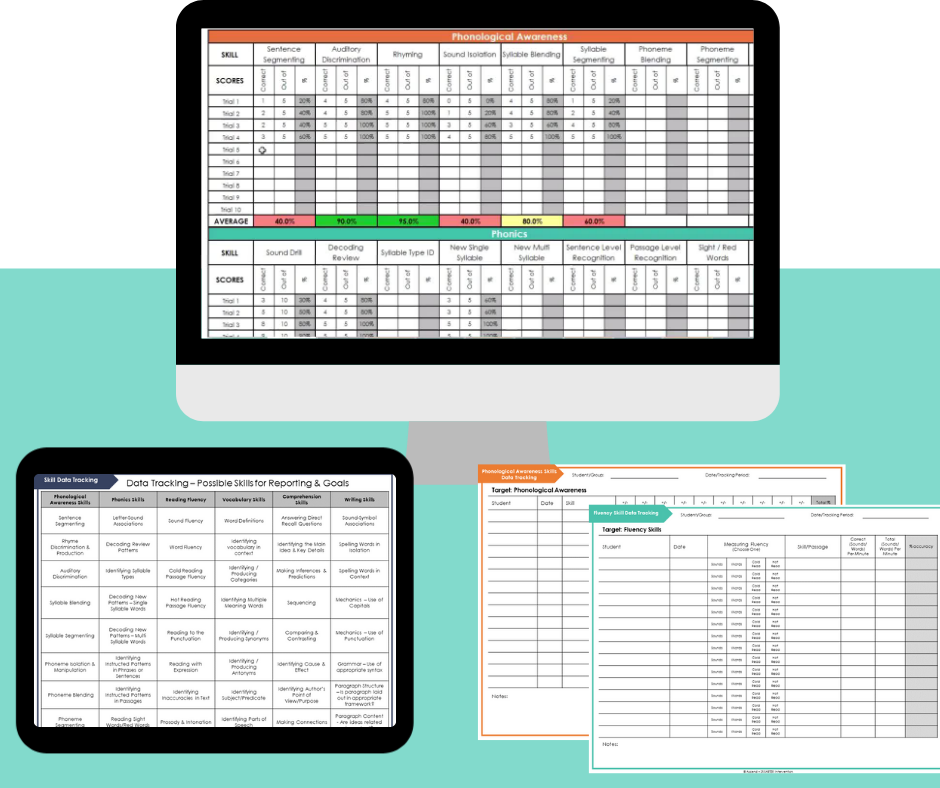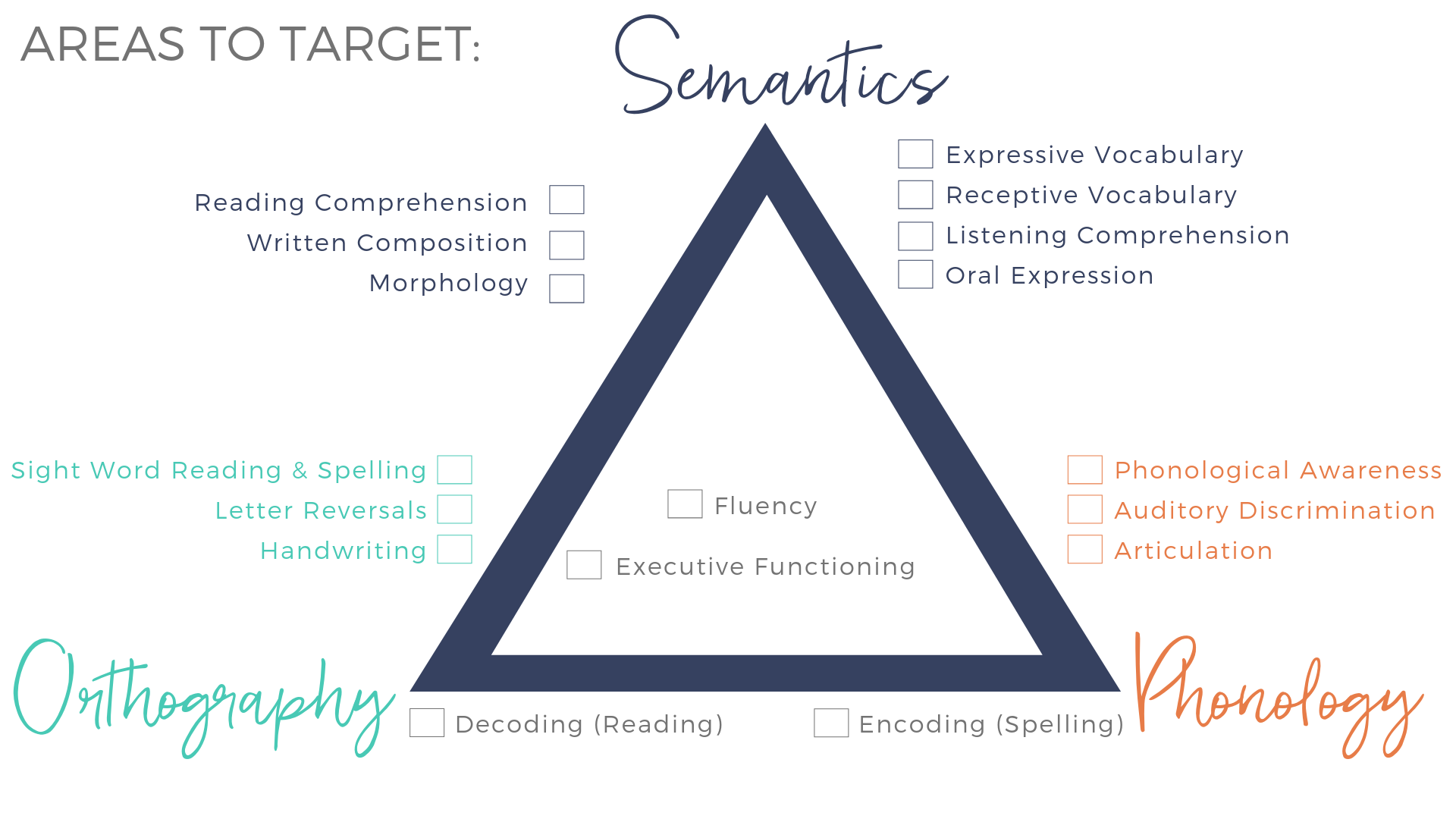How to Target Your Intervention to Get the Best Results
Oh boy, targeted instruction is a big one - so buckle up because we absolutely LOVE this topic.
What does it mean to provide targeted literacy instruction?
Well, we are so glad you asked. As you already know by now, we are huge fans of using the literacy processing triangle basically everywhere possible. Have you seen it?
Probably so, but in case not, here it is:
We know that students who struggle with literacy struggle because of difficulties in one or more of these areas. They struggle with phonology (understanding the sound structure of the language), orthography (understanding the visual structure of the language), or semantics (understanding the meaning structure of the language).
We must start by targeting their specific breakdowns. We talked all about this in our blog about picking relevant intervention activities. But sometimes we need an even bigger picture view of what we’re doing and why we are doing it. So…
How do I make sure I’m meeting my students’ needs?
Providing truly targeted intervention is two-fold:
1 - You need to track and measure your long-term goals (the student’s increased ability to read and write most likely).
This should be done with standardized measures that help you to see that Standard Scores based on the Standard Bell Curve are improving. This means not only are their raw score abilities going up but they are closing the gap to catch up with grade-level peers. This is why it’s critical that at the very least, formal standardized testing MUST occur in IEP triennials…at the very least. Ideally, this would be happening every year or even every 6-months.
You can typically tell that you have a standardized assessment because scores are provided as Standard Scores (Average of 100) with Percentile Ranks (Average of 50) and could be graphed on a bell curve like this. Students’ scores should be moving toward the right as you continue intervention.
We love literacy assessments such as:
Word Identification & Spelling Test (WIST), Gray Oral Reading Test (GORT-5), Test of Integrated Language & Literacy Skills (TILLS), Oral & Written Language Scales (OWLS-2), etc.
You also need to be tracking daily progress with a data-tracking system, which will help keep you on track and recognize IMMEDIATELY if there are skills that just are not sticking for your students. >>Click here<< to check out our data-tracking series.
2 - You need to be thoughtful and strategic on exactly what you are targeting and why.
Based on your intervention, and based on your choice of relevant therapy activities (you did that right?)…if you’re not quite sure what that might look like you may want to download this visual to help target those goals!
We have one more resource that we ABSOLUTELY love to help us guide our intervention.
When we are choosing activities we always want to make sure we are pairing Standardized Assessments with qualitative or curriculum-based assessments. We have a number of curriculum-based assessments we use with our students. If you’re just starting out and don’t have access to Standardized Assessments you may want to use something curriculum-based in addition to standardized assessment (that’s what we do) to guide intervention.
Our data tracking series will walk you through how exactly you can use the assessments you have access to (standardized or curriculum-based) to ensure you are getting the data you need to be able to effectively target your intervention.
Once you have data, it is important to use that to guide your instruction and use targeted activities to support any holes/gaps your students may have. This will allow you to get students the BIGGEST results in the SHORTEST amount of time. Truly, having targeted intervention will change their lives because you are able to serve them and their specific needs.
To begin easily data tracking, be sure to grab our free Data Tracking System. This tool will help make data tracking easy and help you keep your session data organized.






